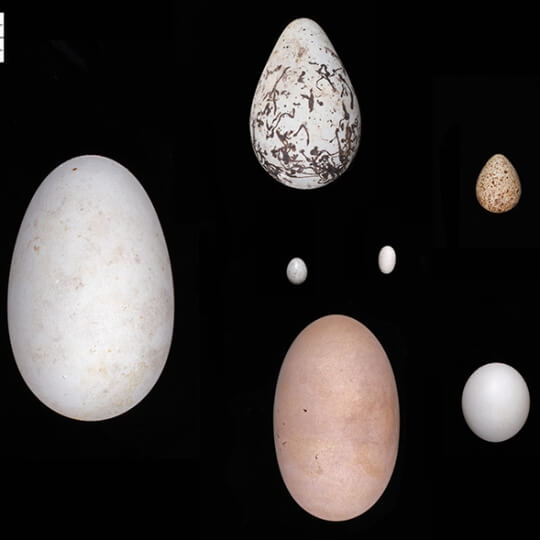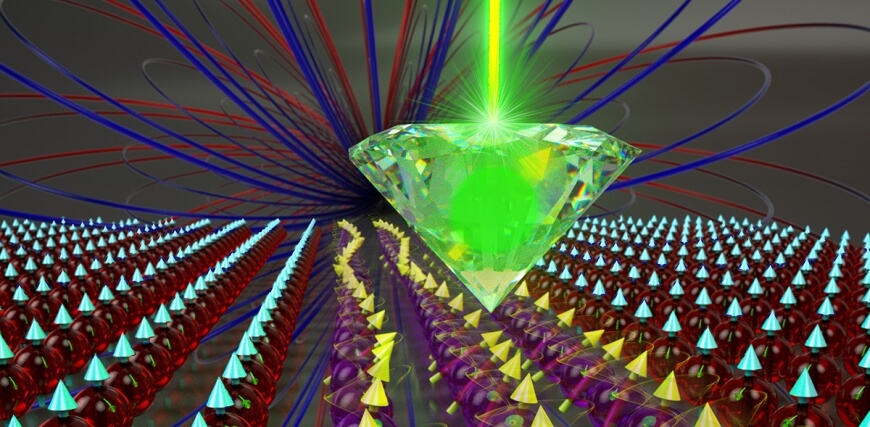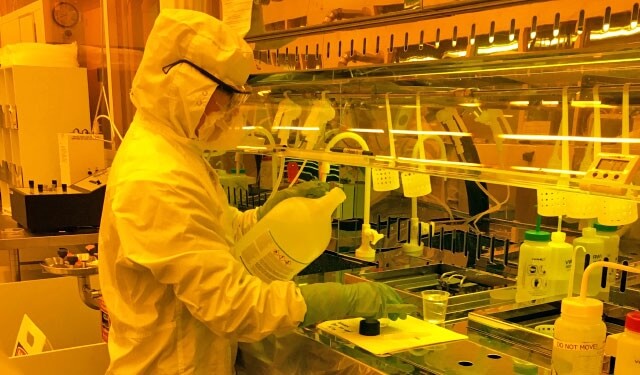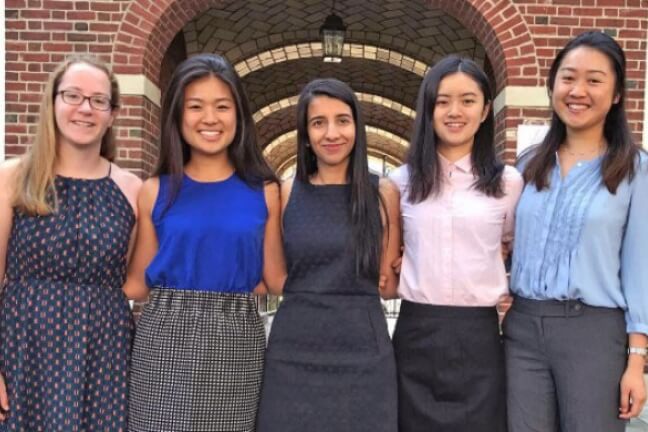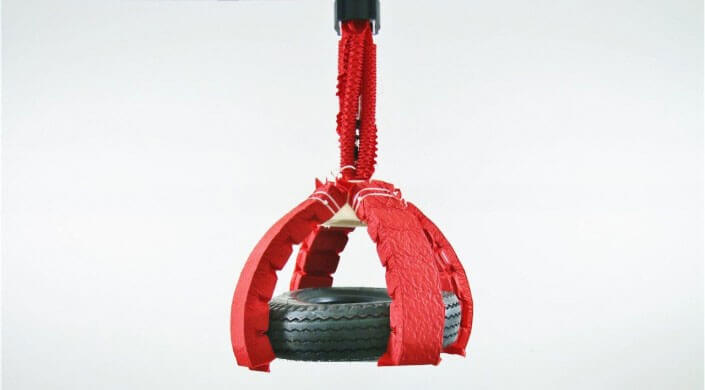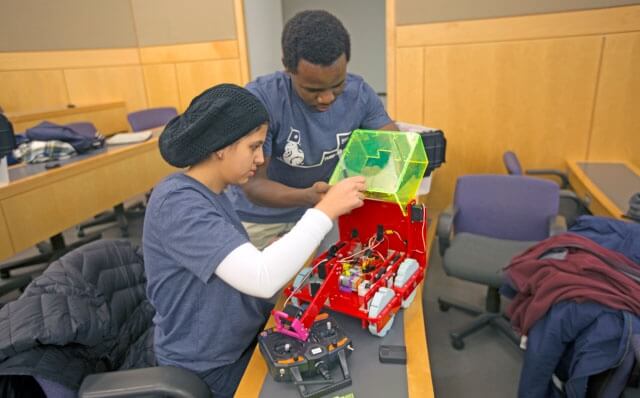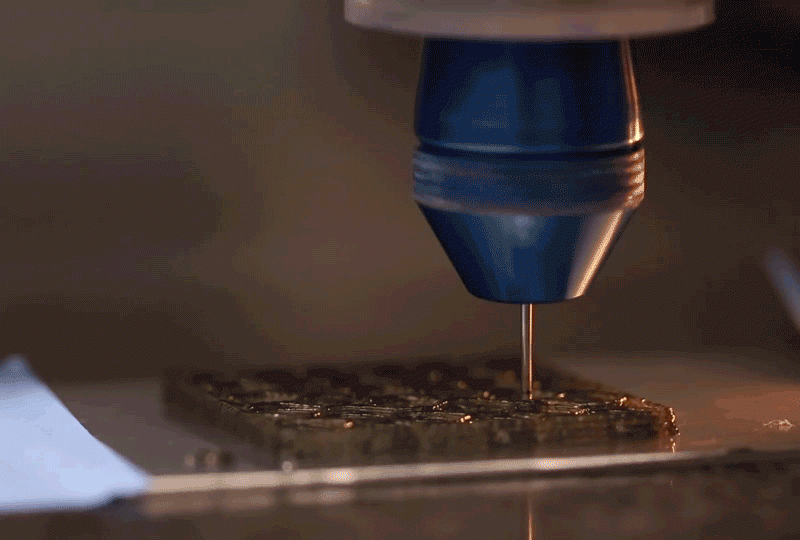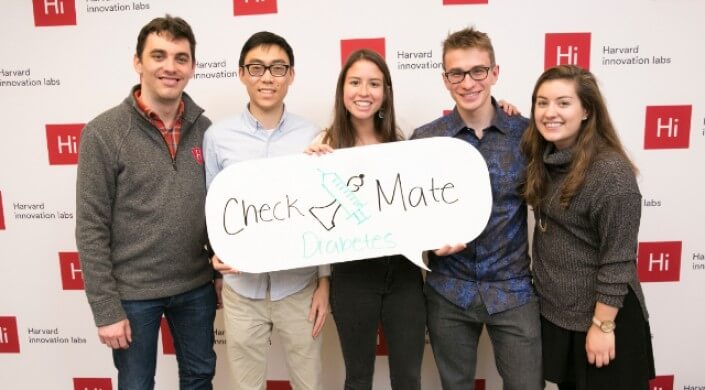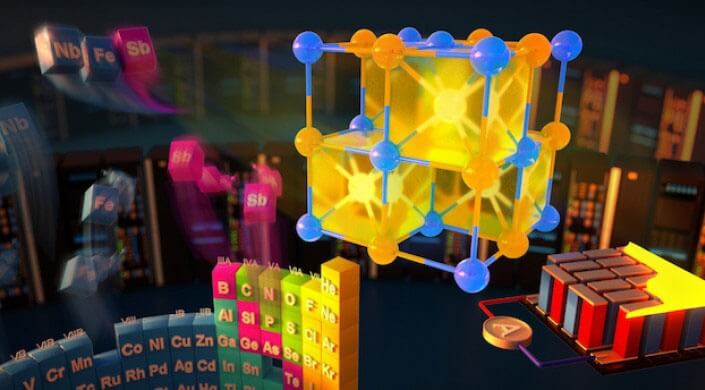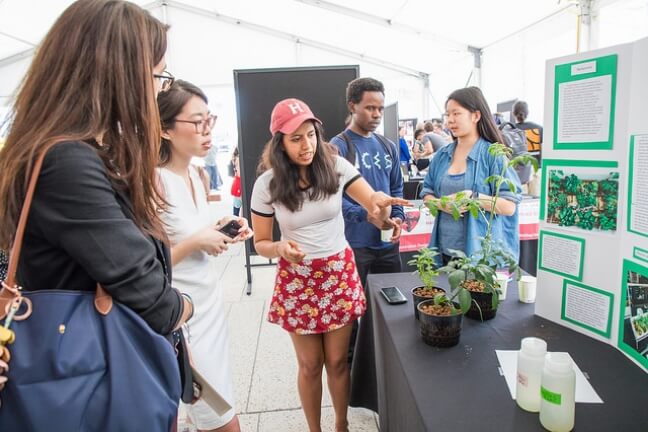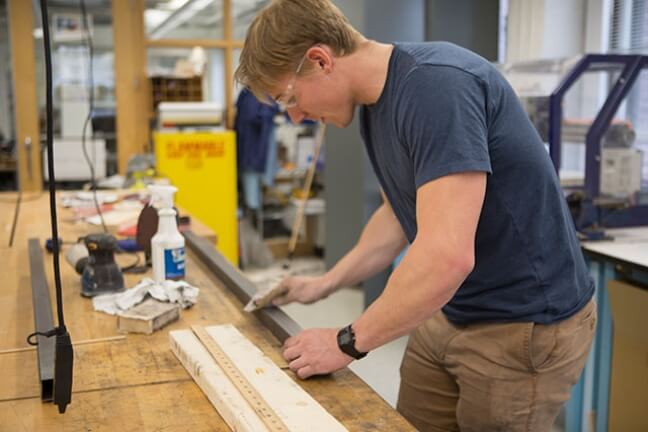News
Through teaching and collaborative research, SEAS discovers, designs, and creates novel technologies and approaches to societal challenges—in service to the world, the nation, and our community. We bridge disciplines, both within engineering and the applied sciences and beyond, to prepare broadly trained leaders, to advance foundational science, and to achieve translational impact. Highlights from a year of innovative teaching, breakthrough research, inventive student projects, and global impact.
June 2017
SEAS researchers found that powerful storm systems common to the Great Plains inject water vapor that, with observed temperature variations, can trigger the same chemical reactions over the central United States that are the cause of ozone loss over the polar regions.
SEAS launched two new master’s degree programs – a joint MS (in Engineering Sciences) and MBA with Harvard Business School; and a MS in Data Science, under the joint academic leadership of faculty from Computer Science at SEAS, and Statistics in the Faculty of Arts and Sciences.
Harvard scientists used drinking straws and other simple materials to create semi-soft machines that walk like insects.
An international team of scientists led by researchers at SEAS and Princeton took a quantitative approach to understanding how the shape of an egg correlates with flight ability, suggesting that adaptations for flight may have been critical drivers of egg-shape variation in birds.
SEAS students partnered with Biogen to design a computational model that can predict whether a patient will develop Alzheimer’s.
With a startup that seeks to streamline the debt-elimination process, a SEAS student won the grand prize in President's Innovation Challenge.
When it opens in 2020, the Science and Engineering Complex will feature the new Harvard Maker Space, offering tools for creativity and discovery.
July 2017
New study finds birds may have evolved elliptical or asymmetric eggs to maintain streamlined bodies for flight (Credit: Museum of Comparative Zoology and Harvard University)
Harvard researchers resolved a conflict in estimates of how much the Earth will warm in response to a doubling of carbon dioxide in the atmosphere. The new framework accounts for conflicting estimates of global temperature increases.
Harvard researchers developed soft and stretchy fabric-based sensors for wearable robots. The hybrid silicone-fabric sensor detects fine motor movements by flexing with the body.
Harvard researchers, led by Amir Yacoby, Professor of Physics and of Applied Physics, developed a technique to control and measure electron spin voltage.
A new study determined that mechanical stress may cue shape recovery in bacteria.
Fourteen students participated in the Harvard Medical School Native American High School Summer Program. As part of the intensive program, focusing on the science of substance abuse, the students spent three days at SEAS for hands-on lab sessions highlighting culinary applications of soft matter science and an overview of 3D printing technology.
SEAS and the T.H. Chan School of Public Health students launched a startup, Planetary Health Watch, to more efficiently identify potential environmental hazards for authorities.
For the fifth year, SEAS and Harvard’s Public School Partnerships team coordinated "Science and Cooking for Kids," a hands-on program that piques kids’ interests in STEM (science, technology, engineering, and math) through an approachable medium: food.
Researchers used atomic-size defects in diamonds to detect and measure magnetic fields generated by spin waves. (Image courtesy of Peter and Ryan Allen/Harvard University)
August 2017
Applied mathematicians and physicists used mathematical modeling to guide the design and distribution of genetically modified genes, such as those in malaria-resistant mosquitos.
SEAS researchers developed a new type of rubber that is as tough as natural rubber but can also self-heal. Potential applications include more durable tires, wearable electronics, and medical devices.
Using sophisticated chemical modeling, researchers from Harvard and the University of Maryland explored what would happen to the ozone layer in response to large-scale volcanic eruptions over the remainder of this century and in several different greenhouse gas emission scenarios.
At Harvard's Center for Nanoscale Systems (CNS), students in the Green Energy Materials Summer Research Program used intrifcate nanofabrication techniques to engineer photovoltaic cells. (Photo by Daniel Chang.)
A study found that the inherent complexity in birdsongs might actually be the result of a simple controllable instability in the structure of the specialized organ used to create song.
The Green Energy Materials Summer Research Program brought together 15 students from Harvard, Korea, and China for a thorough study of solar energy.
International student teams built personal electric vehicles during a SEAS summer program.
September 2017
The September edition of Topics, the SEAS digital magazine, examined the issue of climate change in America.
Six new faculty hires brought their expertise in electrical engineering, computer science, bioengineering, and materials science to SEAS.
A new manufacturing method combined precision printing of stretchable conductive inks with pick-and-place of electronic components to make flexible, wearable sensors.
After "mission accomplished" at a growing startup, several former students returned to Harvard to complete their studies.
To monitor the health of the world’s largest rainforest, a Harvard project used drones to map and monitor the unique chemical signals emitted by trees.
The student-led initiative Four94 was established to boost the number of women entrepreneurs by inspiring, supporting, and mentoring budding women entrepreneurs.
Mechanical engineering concentrator, Sela Kasepa, A.B. ’20, mentored the inaugural Zambian FIRST Global robotics team.
Students (from left) Will Deuschle, A.B. ’19, Steven Kekacs, A.B. ’18, Jake Seaton, A.B. ’19, Leo Hentschker, A.B. ’19, and Ty Rocca, A.B. ’18, are back on campus after leaving Harvard to work full-time for a legislative data analytics startup. (Photo by Adam Zewe/SEAS Communications.)
The Four94 leadership team, (from left) Katherine Binney, A.B. '19, Janet Chen, A.B. '19, Risham Dhillon, A.B. '18, Demi Guo, A.B. '20, and Yong Dich, A.B. '20. (Photo provided by Risham Dhillon.)
October 2017
SEAS roboticists created a new, hybrid RoboBee that can fly, dive into water, swim, propel itself back out of water, and safely land. This latest-generation RoboBee, which is 1,000 times lighter than any previous aerial-to-aquatic robot, could be used for numerous applications, from search-and-rescue operations to environmental monitoring and biological studies.
New, hybrid RoboBee can fly, dive into water, swim, propel itself back out of water, and safely land. (Image courtesy of Yufeng Chen/Harvard SEAS)
A team of SEAS researchers, in collaboration with Peking University, demonstrated a new way to control the momentum of broadband light in a widely-used optical component known as a whispering gallery microcavity.
Jelani Nelson, Associate Professor of Computer Science, demonstrated that a 30-year-old theorem is still the best to reduce data and speed up algorithms.
The Mahadevan group developed mathematical techniques for designing shape-shifting shells.
Master of Design Engineering students explored multi-scale challenges in the program’s inaugural year.
Harvard freshman Maya Burhanpurkar presented novel research on self-driving wheelchair technology.
Harvard students in Engineers without Borders helped provide 24/7 water access for a rural Dominican community.
SEAS celebrated 10 years of widening innovative research, as it looks to its expanded future.
November 2017
Researchers at SEAS created origami-inspired artificial muscles that add strength to soft robots, allowing them to lift objects that are up to 1,000 times
Origami-inspired artificial muscles are capable of lifting up to 1,000 times their own weight, simply by applying air or water pressure. (Image courtesy of the Wyss Institute for Biologically Inspired Engineering)
their own weight using only air or water pressure.
SEAS researchers developed a metasurface that generates new states of light for fundamental research and applications.
With a surging membership, the Robotics Club took on new challenges.
Biomedical engineering concentrator Pooja Chandrashekar, A.B. '18, led ProjectCSGIRLS, the nation's largest computer science competition for middle school girls.
Art and engineering met in the Harvard ceramics studio, as mechanical engineering concentrator Rebecca Gracia, S.B. '18, used ceramics as the central theme of her engineering thesis project. She built a combination kiln for the Harvard Ceramics Program that will enable both wood and propane firing.
December 2017
Competitors Marwah Sabrah A.B. ’21 and Daniel Getega, S.B. ’19, an electrical engineering concentrator, make last minute adjustments to their robot before entering the arena for the ES51 Turf Wars. (Photo by Alana Davitt/SEAS Communications)
Researchers demonstrated high-quality optical microstructures using lithium niobate.
SEAS researchers discovered that archaea, bacteria, and eukarya use the same mechanism to maintain size.
The science of chocolate brought families to campus for the annual holiday lecture, “Hold your Temper: Celebrating the Science of Chocolate.”
Student-built robots went head-to-head in ES 51 Turf Wars tournament.
Students’ synthetic biology project used bacteria to produce polymers.
January 2018
Researchers at SEAS developed a system to convert one wavelength of light into another without the need to phase match.
A research team led by Rob Wood, Charles River Professor of Engineering and Applied Sciences, developed a millimeter-scale robot that opens new avenues for microsurgery, microassembly, and micromanipulation.
SEAS researchers demonstrated how "rotational 3D printing" yields unprecedented control of the arrangement of short fibers embedded in polymer matrices.
A novel 3D printing method yields unprecedented control of the arrangement of short fibers embedded in polymer matrices (Image courtesy of the Lewis Lab/Harvard SEAS)
Researchers in the Capasso Lab developed a single metalens that focuses all colors of the rainbow in one point. This ground-breaking lens opens new possibilities in virtual and augmented reality.
During the 2018 ComputeFest Hackathon, student teams from across Harvard used machine learning techniques to detect fraudulent insurance claims. Presented with data from more than 18,000 health care providers, the open-ended problem challenged students to devise, test, and then refine the best algorithmic technique to identify fraud.
A SEAS student developed an app that puts procrastinators on the clock.
A student startup was launched with the goal of pushing life science innovations out of the lab.
February 2018
Finale Doshi-Velez and Yaron Singer, assistant professors of Computer Science at SEAS, were named Sloan Research Fellows for their research in machine learning.
SEAS researchers in the Harvard Microrobotics Laboratory developed a centimeter-scale robot inspired by cockroaches. The Harvard Ambulatory Microrobot — nicknamed HAMR — is a versatile robot that can run at high speeds, jump, climb, turn sharply, carry payloads, and fall from great distances without being injured.
SEAS researchers developed a soft robot that crawls without any rigid components. The soft robotic scales are made using kirigami — an ancient Japanese paper craft that relies on cuts, rather than origami folds, to change the properties of a material. As the robot stretches, the flat kirigami surface is transformed into a 3D-textured surface, which grips the ground just like snake skin.
A student-founded fellowship that fosters interest in public service careers brought students from across the country to Washington, D.C. to solve pressing problems at the U.S. Census Bureau.
More than two hundred students from around the world participated in the MakeHarvard Engineering Hackathon. The event was inspired by a computer science hackathon, and aimed to bring students together to be creative and have fun.
March 2018
Harvard researchers developed a facile biomaterial approach that educates the immune system with tumor-specific peptides, an approach that could help
The Checkmate Diabetes team (from left) Michael Heisterkamp, Huey Shih, Emi Gonzalez, Filip Michalsky, and Tara Markert. (Photo provided by Emi Gonzalez)
eradicate tumors more effectively while preventing them from recurring.
SEAS researchers created a new flat optical device has applications in augmented and virtual reality, ultra-high resolution microscopy, and holography.
Researchers led by Kevin Kit Parker, Tarr Family Professor of Bioengineering and Applied Physics, developed nanofiber dressings that heal wounds, and promote regeneration.
SEAS undergraduates shared their love of STEM with a group of middle school students from the Hyde Park YMCA in Boston.
SEAS students participated in a cross-cultural, interdisciplinary program that combines astronomy and data science.
Social support and machine learning were at the core of a student-developed app for people with diabetes.
April 2018
A new algorithm uses the chemical elements in a crystal to predict its material properties. The algorithm simplifies computational required for material discovery and speeds up the process by about 10,000 times, compared to existing algorithms. (Image courtesy of Second Bay Studios/Harvard SEAS)
Researchers at SEAS uncovered a new phenomenon of quantum cascade laser frequency combs, which would allow these devices to act as integrated transmitters or receivers that can efficiently encode information. This discovery has the potential of increasing the capacity of wireless communications.
SEAS researchers developed an algorithm that can discover and optimize new materials in a matter of months, relying on solving quantum mechanical equations, without any experimental input.
Researchers at Harvard and George Washington University found that in the coming decades, increased dust emissions from severe and prolonged droughts in the American Southwest could result in significant increases in hospital admissions and premature deaths.
Bill Gates, founder of Microsoft, toured SEAS labs, and chatted with students during a visit to campus.
Engineering the Acoustical World (ES 25) used music to introduce fundamental engineering concepts.
Computer science students built a web platform for a Rwandan education nonprofit.
May 2018
Harvard research offered a strategy for reducing CO2 emissions and improving air quality with electric vehicles in Beijing.
SEAS researchers built a robot that transitions from soft to rigid by harnessing friction.
Students tackled real-world challenges in their capstone engineering course.
The annual Design and Project Fair showcased student creations.
A student startup empowered people to take control of their credit.
A new student club built a creative, safe, and efficient novel human powered vehicle.
SEAS researchers led by Marko Loncar, Tiantsai Lin Professor of Electrical Engineering, developed a process similar to guitar tuning that could improve storage time of quantum memory.
Researchers engineered a cell-like structure that harnesses photosynthesis to perform designer reactions.
Students in Engineering Problem Solving and Design Project (ES 96) explored the problems around transportation connectivity in Boston, and developed solutions aimed at easing the burden on residents and travelers.
Environmental science and engineering concentrator Leticia Ortega, S.B. '19, discusses her team's hydroponic aquaponic water filtration system. (Photo by Eliza Grinnell/SEAS Communications.)
Sam Meijer, S.B. ’19, a mechanical engineering concentrator, works on his team's prototype in the Active Learning Labs. (Photo by Adam Zewe/SEAS Communications)
Cutting-edge science delivered direct to your inbox.
Join the Harvard SEAS mailing list.
